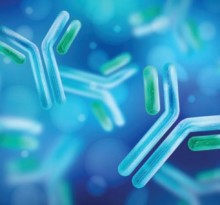Climate Change and Shrinking Ice Threaten Polar Birds
At nearly four feet tall, the Emperor penguin is Antarctica’s largest seabird—and thanks to films like “March of the Penguins” and “Happy Feet,” it’s also one of the continent’s most iconic. If global temperatures continue to rise, however, the large colony of emperor penguins in Terre Adélie in East Antarctica may eventually disappear, according to a study led by researchers from the Woods Hole Oceanographic Institution (WHOI).
The decline of those penguins is likely connected to a simultaneous decline in Antarctic sea ice resulting from warming temperatures in the region, said Stephanie Jenouvrier, WHOI biologist and lead author of the study.
Unlike other seabirds, emperor penguins breed and raise their young almost exclusively on sea ice. If that ice breaks up and disappears early in the breeding season, massive breeding failure may occur, she said. “As it is, there’s a huge mortality rate just at the breeding stages of penguins’ life cycle, because only 50 percent of chicks survive to the end of the breeding season, and then only half of those fledglings survive until the next year.”
Disappearing sea ice may also affect the penguins’ food source. The birds feed primarily on fish, squid, and krill, a shrimplike animal, which in turn feeds on tiny zooplankton, phytoplankton, and algae that grows on the underside of the ice. If the ice goes, Jenouvrier said, so too will the plankton, causing a ripple effect through the food web that may starve the various species that penguins rely on as prey.
To project how penguin populations may fare in the future, Jenouvrier’s team used data from climate models, sea ice forecasts, and a demographic model that Jenouvrier created of the emperor penguin population at Terre Adélie, a coastal region of Antarctica where French scientists from French Polar Institute Paul Émile Victor have conducted penguin observations for more than 50 years.
“Long-term data are required, if you really want to study the impact of climate variability on populations,” she said. “Antarctica is, on average, the windiest, driest, and coldest place on Earth. For this reason, it’s very hard to study emperor penguin colonies. The only place we can study an entire colony over their entire year’s cycle is in Terre Adélie, because there, the scientific base is not far from the penguin colony.”
“If you want to study the effects of climate on a particular species, there are three pieces that you have to put together,” said Hal Caswell, a mathematical biologist at WHOI and collaborator on the paper. “The first is a description of the entire life cycle of the organism, and how individuals move through that life cycle. The second piece is how the cycle is affected by climate variables. And the crucial third piece is a prediction of what those variables may look like in the future, which involves collaboration with climate scientists.”
Jenouvrier used results from various climate models to determine how changes in sea ice might affect the emperor penguin population at Terre Adélie. She found that if greenhouse gas emissions continue to rise at levels similar to today—causing temperatures to rise and Antarctic sea ice to shrink—penguin population numbers will diminish slowly until about 2040, after which they would decline at a much steeper rate as sea ice coverage drops below a usable threshold.
“Our best projections show roughly 500 to 600 breeding pairs remaining by the year 2100. Today, the population size is around 3,000 breeding pairs,” Jenouvrier said. The study was published in June 2012 in the journal Global Change Biology.
Jenouvrier is continuing the research on penguins. At Terre Adélie, scientists are instituting an easier method of monitoring the penguin population. “We’re putting what’s called a PIT (Passive Inductive Transponder) tag under the skin of the birds,” she said. “It’s like what we put in cats and dogs. We’ll be able to record the identity of each bird, so we will be able to know if they are surviving and returning to the colony.”
At the same time, Jenouvrier has expanded her research to explore climate change impacts on penguin colonies throughout Antarctica.
“Over the last century, we have already observed the disappearance of the Dion Islets penguin colony, close to the West Antarctic Peninsula,” Jenouvrier said. “In 1948 and the 1970s, scientists recorded more than 150 breeding pairs there. By 1999, the population was down to just 20 pairs, and in 2009, it had vanished entirely.”
Also collaborating on the study were Christophe Barbraud and Henri Weimerskirch of the Centre d’Etudes Biologiques de Chizé in France and Julienne Stroeve and Mark Serreze of the National Snow and Ice Data Center; and Marika Holland from the National Center of Atmospheric Research in the United States. Funding for the study was provided by the WHOI Ocean Life Institute, the WHOI Arctic Research Initiative, and the WHOI Access to the Sea program; the National Science Foundation, Agence National de la Recherche Biodiversité, the Institut Paul Émile Victor, the Alexander von Humboldt Foundation, Marie-Curie European fellowship, and the Cooperative Institute for Research in Environmental Sciences visiting fellowship.







